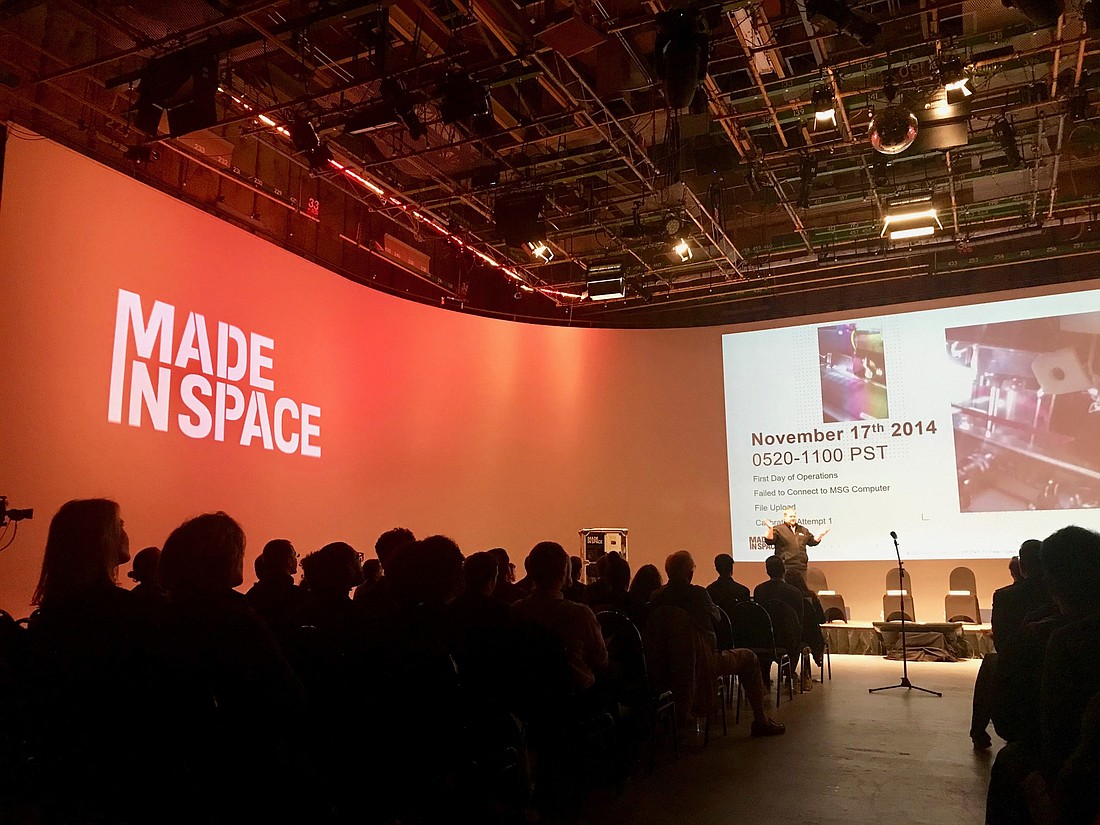
Made In Space’s goal to “enable people to sustainably live and work in space” may sound lofty, but President and CEO Andrew Rush says efforts to make it happen are underway.
Rush shared Made In Space’s vision Feb. 27 at an event celebrating the fifth anniversary of the company’s zero-gravity 3D printer.
In January, Made In Space announced it was relocating its corporate headquarters to Jacksonville from Silicon Valley. In July, it received a $73 million contract to demonstrate Archinaut, the company’s autonomous robotic manufacturing and assembly platform, on a flight mission.
Made In Space was founded in 2010 in Mountain View, California. Its Jacksonville headquarters is at 8226 Philips Highway.
Space manufacturing, Rush said, is the next step toward people living and working in space. Several companies working to improve and make launch technology more accessible, like SpaceX and Blue Origin, but that won’t allow people to live and work in space sustainably.
“You need a reason to go,” Rush said. “Every frontier we’ve ever opened as a people was because there was an economic reason for us to go and live and work in that place ... That’s what we think is the missing piece in space exploration, . . . that economically-focused motivator to go and innovate and do new things.”
Space manufacturing is the answer, he said.
“This is going to be the enabler, the economic motivation that gets us off the planet,” he said. “We want to get to factories and factory workers in space, creating things that provide economic benefits to all of humanity wherever they are.”
Made In Space has been working with NASA and the International Space Station U.S. National Laboratory, to test and create projects. The company’s 3D printer, the Additive Manufacturing Facility, was the first commercial manufacturing service in space.
In January 2018, the first ZBLAN optical fiber was manufactured on the ISS. The fiber showed that some products are better when made in space, Rush said. When ZBLAN is manufactured in a strong gravitational environment, it’s more prone to flaws, he said.
Twenty years from now, Rush said he sees all kinds of manufacturing done in space, including satellites. That’s what the Archinaut will attempt to do. It’s scheduled to launch no later than 2022.
“We and many others working together have been able to deliver on some of the promises of the common visions of us as a company, of us as a community, of us as a people,” Rush said. “And together I really believe we are going to continue to do that.”